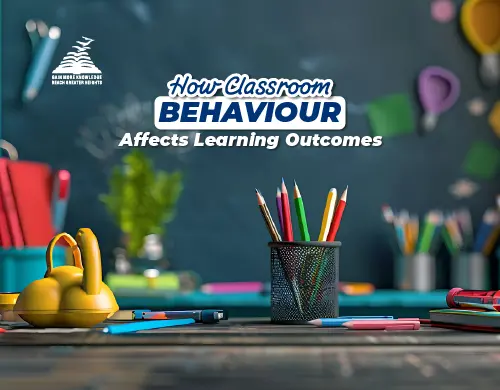In today’s age of technology, where education permeates every aspect of our lives, it comes as no surprise that educational institutions are also embracing the digital revolution. The schools in Bangalore and other parts of the country are progressively stepping into the realm of smart classrooms, using cutting-edge technology to enhance the learning experience for students. Digital transformation has, however, raised questions about students’ access to laptops and tablets in the classroom.

On the one hand, proponents argue that these technological tools can enhance student engagement, improve collaboration, and provide access to a world of knowledge at their fingertips. On the other hand, others worry about potential distractions, decreased social interaction, and unequal access among students.
In this article, we will take a closer look at both sides and explore whether laptops and tablets should have a place in today’s classrooms. So grab your digital device (if you’re allowed!) and let’s dive right in.
The Pros of Allowing Laptops and Tablets in Classes
- Improved access to information:One of the biggest advantages of allowing laptops and tablets in classes is the instant access to a vast amount of information. No longer do students have to spend hours in the library looking for relevant books or in the computer lab waiting for their turn. With these devices, students in schools from places like Yelahanka( or any other location anywhere around the world ) can quickly search for and exchange information across the globe, access e-books and digital resources, and stay updated with current events. This not only saves time but also encourages independent learning and critical thinking.
- Enhanced Collaboration and Communication:Laptops and tablets offer numerous tools that foster collaboration among students. Through shared documents, video conferencing apps, and online discussion boards, learners can work together on projects regardless of their physical location. This promotes teamwork skills while preparing students for the increasingly digital workplace they will encounter after graduation.
- Engaging Multimedia Learning:Traditional textbooks can be boring sometimes. However, with laptops and tablets, educational content comes alive through interactive multimedia elements such as videos, animations, quizzes, and simulations. These dynamic learning experiences capture students’ attention better than static texts alone.
- Personalised Learning Experiences:Every student has different strengths, weaknesses, and learning styles. Laptops and tablets allow teachers to tailor instruction based on individual needs more effectively. Adaptive software programmes can provide personalised lessons at each student’s pace or suggest additional resources based on their performance.
- A better way to plan:Digital devices help students stay organised by providing tools like calendars, to-do lists, and note-taking apps. Everything is conveniently stored in one place, reducing clutter and making it easier to keep track of assignments, test dates, and project deadlines. This fosters greater accountability, responsibility, and time management skills among learners.
The Cons of Allowing Laptops and Tablets in Classes
- Distraction:One of the major downsides to allowing laptops and tablets in classes is the potential for distraction. With access to the internet, students may be tempted to browse social media, play games or engage in other non-academic activities during class time. This can significantly impede their ability to focus and absorb information.
- Reduced interaction:Another drawback is that the use of laptops and tablets in classrooms can lead to a decline in face-to-face interaction among students. Instead of actively participating in the discussions or engaging with their peers, students may become engrossed in their screens, hindering collaboration and interpersonal skill development.
- Cheating concerns:The presence of technology also raises concerns about cheating during exams or assignments. Students could easily access unauthorised materials or communicate with others for answers without detection.
- Disparities:Not all students have equal access to laptops and tablets outside of school hours. Allowing these devices may further widen the digital divide between those who own such gadgets and those who don’t, potentially creating an unfair advantage for some students.
- Health implications:Extended screen time has been linked to various health problems, including eye strain, headaches, sleep disturbances, poor posture, etc., which might affect student well-being over time if not managed properly.
- Impaired note-taking skills:Relying on laptops for taking notes instead of traditional pen-and-paper methods can hinder effective learning processes like retention, conceptualization, and critical thinking abilities.It’s important to weigh these cons against the potential benefits before deciding whether laptops should be allowed in classrooms.
What methods should the schools in Yelahanka use to train and support students?
Schools should provide adequate training and support for both teachers and students. This could include workshops or tutorials on how to effectively utilise technology in the classroom setting. It is important that everyone involved feels confident and comfortable using these devices as educational tools.
Establishing clear guidelines for laptop and tablet usage is essential. Schools may consider implementing policies that outline when devices can be used during class time, such as for specific activities or designated periods. These guidelines should also address internet safety measures to protect students from potential online risks. Ensuring accessibility is key when implementing the use of laptops and tablets in classes. Schools should explore options for students who do not have access at home or offer financial assistance programmes for families who cannot afford these technologies.
Conclusion
After weighing the pros and cons of allowing laptops and tablets in classes, it is clear that when considering whether to allow laptops in classrooms, schools in Yelahanka and other areas of North Bangalore must carefully evaluate their specific educational goals and needs. It is essential to strike a balance between embracing technology’s advantages and mitigating its drawbacks.
When used appropriately with proper guidance from teachers and consistent monitoring from educational institutions, laptops and tablets can serve as powerful tools for enhancing learning experiences. However, it is important not to overlook traditional teaching methods entirely, as they still have value in fostering critical thinking skills among students.




